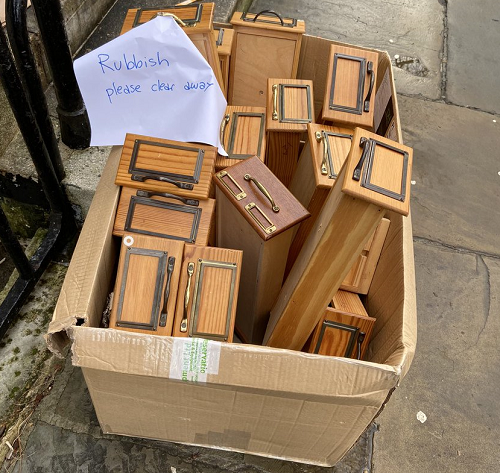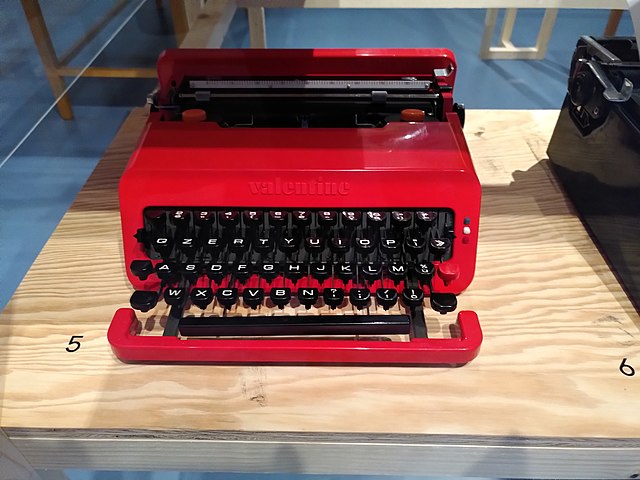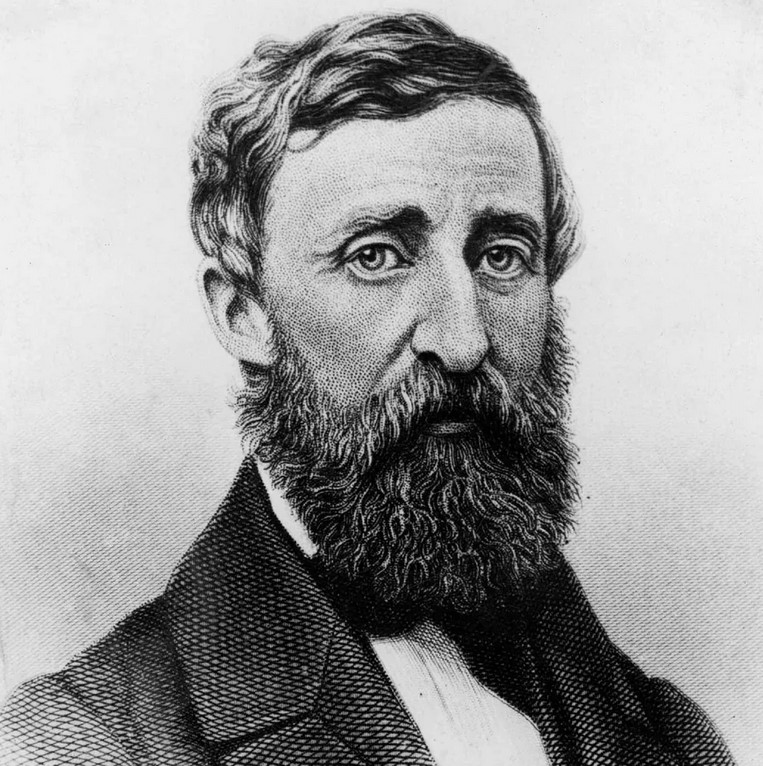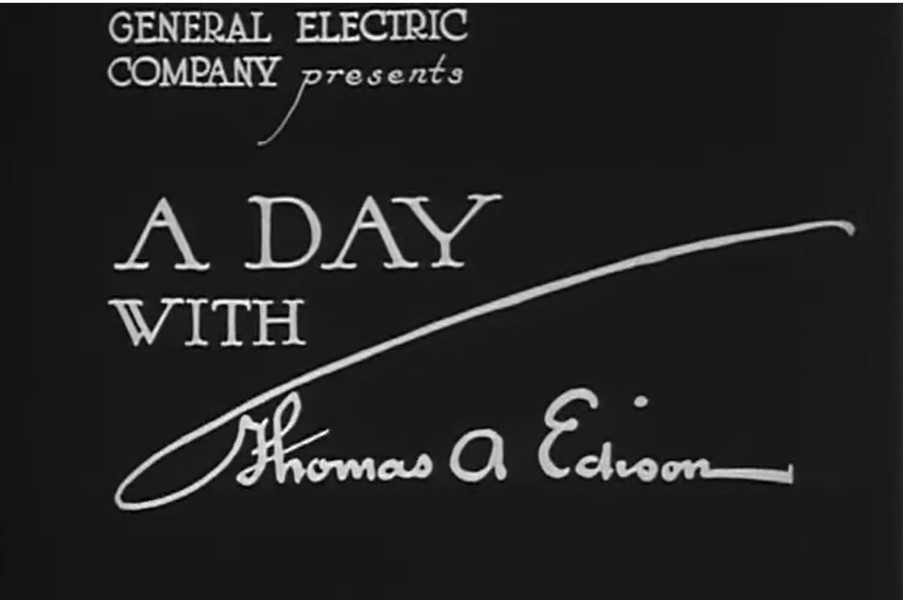The dream is diversity

“We co-create with one another and with nature, but by the very creativity of the Universe and us in it, we cannot know what we will co-create.
Then what can guide us? Our guide can be a new founding mythic structure that reflects our full enlivenment: humanity in a creative universe, biosphere and human individual, and social lives that are fully lived and that keep becoming. The dream is diversity, more ways of being human as our 30 or so civilisations across the globe weave together gently enough to honour their roots and allow change to unfold gracefully. Our global woven civilisation is ours to create, ever-unknowing, facing, as Immanuel Kant said, the crooked timber of our humanity."
Stuart A. Kauffman, ‘Why science needs to break the spell of reductive materialism’. Aeon 💬
See also: Stuart A. Kauffman (2016) Humanity in a Creative Universe. Oxford University Press.
Image: [Chemical composition of coal][3].
I’m the author of Shu Ha Ri: The Japanese Way of Learning, for Artists and Fighters, available, now.
Stay in the Writing Slowly loop and never miss a thing (you’ll get a weekly digest of everything posted here, all in one convenient email.)
[3]: https:</https:></https:></https:>
The dream is diversity

“We co-create with one another and with nature, but by the very creativity of the Universe and us in it, we cannot know what we will co-create.
Then what can guide us? Our guide can be a new founding mythic structure that reflects our full enlivenment: humanity in a creative universe, biosphere and human individual, and social lives that are fully lived and that keep becoming. The dream is diversity, more ways of being human as our 30 or so civilisations across the globe weave together gently enough to honour their roots and allow change to unfold gracefully. Our global woven civilisation is ours to create, ever-unknowing, facing, as Immanuel Kant said, the crooked timber of our humanity."
Stuart A. Kauffman, ‘Why science needs to break the spell of reductive materialism’. Aeon 💬
See also: Stuart A. Kauffman (2016) Humanity in a Creative Universe. Oxford University Press.
Image: Chemical composition of coal.
Stay in the Writing Slowly loop and never miss a thing (you’ll get a weekly digest of everything posted here, all in one convenient email. Nice.)
Just want to say I’ve been using #Workflowy for 541 weeks now. It’s just fantastic. The app I’m happiest to pay my annual fee for (apart from #micro.blog, of course). #PKM 📝
Checked out this new Sydney cycling path on the weekend. It runs from Parramatta, across the Parramatta River, and nearly 5km North to Carlingford. Extended safe, off-road riding makes me happy 😁📷🚲

The mastery of knowledge is an illusion
The writing task always eludes us.
CJChilvers sees in the slow but inevitable demise of the Evernote app a deeper critique of the concept of the ‘external brain’. Indeed, this term is rather clumsy marketing-speak, hardly improved by Tiago Forte’s version: ‘Building a Second Brain’.
I only have one brain, and it’s internal, thankfully. But I’m still very happy with the idea of the ‘extended mind’. My brain remains firmly in my skull, but it nevertheless uses the environment in many different ways to extend its capabilities.
Even though it seems like computing has been with us forever, it’s still really very early days. This technology is still quite new. We’re only just beginning to understand how to use it. I see the Evernote saga, and the concept of an external brain as part of that ongoing learning process.
It might be helpful to set the whole matter of external brains and extended minds in a wider context of literate and non-literate cultures.
Literate cultures tend to absorb many extended mind capabilities, such as memory, into writing. For example, How many poems or songs do you know by heart? Probably not many. What’s the point these days of learning things by heart? Why remember poems when you can just read them from a book? Literacy appears obviously superior to memory, even though something is lost along the way. What gets lost is the older, mnemonic culture of pre-literate societies. This loss in the transition from speaking to writing is what Plato’s Socrates warned of. Most literate people, though, neither mourn the loss nor even really notice it. The promise of writing is that if you could just get it all down you’ll have captured it, tamed it and mastered it. This is a familiar quest, from Adler’s Syntopicon1 to Otlet’s Mundaneum2, even to Allen’s “Getting Things Done”3. But somehow, the completion of the Writing Task, always eludes us. It’s too big. There’s simply too much to know and there has been for some time.
But oral cultures live in an enchanted world, not necessarily in a magical sense, but in the sense that the whole environment ‘speaks’, as part of a wider extended mind. Geographical features are not merely ‘dead matter’. They’re alive to tell stories which recount histories and genealogies, to give blessings and warnings. Plants and animals are similarly endowed with a depth of meaning.
This is the world that literate culture has exiled itself from, so that it barely comprehends its existence, much less its significance.
But this living world remains available to us. The exile is self-imposed. In her book, The Extended Mind, Annie Murphy Paul says:
“We extend beyond our limits, not by revving our brains like a machine or bulking them up like a muscle — but by strewing our world with rich materials, and by weaving them into our thoughts.”
We can’t master knowledge. It’s what we live in. This requires a radical shift of worldview from colonialist to ecological. The colonial approach to knowledge is to capture it in order to profit from it. The ecological approach is to live within it as within a garden to be tended. The two worldviews may well be mutually incompatible, though this matter is hardly resolved yet.
This saga isn’t over.
Further reading:
Annie Murphy Paul, The Extended Mind. The power of thinking outside the brain.
Margo Neale and Lynne Kelly, Songlines: The Power and Promise.Thames and Hudson.
Why not subscribe to the weekly email digest? All the posts, but only once a week.
Walter Benjamin on the obsolete book
“Already today, as the current scientific mode of production teaches, the book is already an obsolete mediation between two different card file systems. For everything essential is found in the index box of the researcher who wrote it, and the scholar who studies it assimilates it in his own card file.”
“Und heute schon ist das Buch, wie die aktuelle wissenschaftliche Produktionsweise lehrt, eine veraltete Vermittlung zwischen zwei verschiedenen Kartotheksystemen. Denn alles Wesentliche findet sich im Zettelkasten des Forschers, der’s verfaßte, und der Gelehrte, der darin studiert, assimiliert es seiner eigenen Kartothek."
Walter Benjamin - Attested Auditor of Books, in One Way Street (1928) 💬
Comment
Was the book really already obsolete in 1928, as the German cultural theorist Walter Benjamin claimed?
If so, it has nevertheless enjoyed a long and distinguished afterlife. And Benjamin’s sly reference to what ‘the current scientific mode of production’ teaches, may suggest a certain irony in his claim.
But the real irony is that the card index was sooner for obsolescence than the book. During the 1980s and accelerating into the 1990s millions of index cards were thrown out, to be replaced with computer databases. Despite a very niche resurgence of interest in the quaint technologies of the ‘Zettelkasten’ (German for ‘index card box’, there’s no real sign of a come-back. The book, meanwhile, has been assailed mightily by the e-book, but as Monty Python fans would say: “It’s just a flesh wound”.
However, another way of viewing this technological transition would be to say that the card index, in the new form of the electronic database, has utterly triumphed. Now everything is just the front-end of a database, including books.

References
Benjamin, W. (2016[1986]) One Way Street, Trans. E. Jephcott. Cambridge, MA: Harvard University Press. P. 43.
Source: www.heise.de/tp/featur…
Cited in Stop Taking Regular Notes; Use a Zettelkasten Instead - Hacker News
See also: Researching Benjamin Researching
Hermann Burger - Serious about a Zettelkasten?

The Swiss writer Hermann Burger (1942–1989) wrote the draft of a novel in 1970 called Lokalbericht (1970) [Local Report].
“‘Local Report’ – I already have the title, the hardest part of a book. Now, I’m just missing the novel.” [“Lokalbericht – den Titel, das Schwierigste an einem Buch, habe ich schon. Fehlt mir nur noch der Roman."]
The story’s narrator was right. Burger was a poet and novelist but he never finished this early novel. He died in 1989 and it wasn’t published until October 2016. I found a single English-language review.
The protagonist of Lokalbericht, the young teacher Günter Frischknecht1 is in the canton of Ticino trying to write two pieces of work at the same time, a dissertation and a novel, writing on two different typewriters and using two different Zettelkästen. These two card indices get mixed up and the slips intermingle. What to do in this situation? Reality and fiction apparently can no longer be distinguished.
This farcical Zettelkasten confusion is foreshadowed early on in the novel by Frishknecht’s academic supervisor Professor Kleinert, of whom he says:
“He didn’t believe I could actually be serious about a Zettelkasten.” [“Dass ich tatsächlich Ernst machen könnte mit einem Zettelkasten, hat er mir wohl kaum zugetraut."]
This story-line seems to be consistent with a long-standing trope among scholars that the loose slips of paper with which they ordered their work could at any moment get mixed up, or even worse, blow away, resulting in chaotic disorder.
Well, now it’s all been put back together. There’s a very impressive interactive online version of the novel, and in 2017 there was an exhibition centred upon it at the Aarau Museum.
It was Manfred Kuhn’s wonderful, though sadly defunct, blog Taking Note Now that originally alerted me to this novel and the Zettelkasten mix-up, but I had completely forgotten.
-
a composite name made up of Günter Grass and Max Frisch, with more than a nod to the old Knecht, the Magister Ludi of The Glass Bead Game. ↩︎
📷 Low hanging cloud over the creek on the way home.


Currently reading: Milkman by Anna Burns. 📚 By turns hilarious and harrowing. It’s not at all how I imagined it, which was mainly harrowing. Sure, the eponymous ‘Milkman’ is deeply sinister (and the narrative has only just got going), but the narrator’s voice is fantastically funny and engaging.
Thoughts are nest-eggs - Thoreau on writing
In October 1837 the writer Ralph Waldo Emerson prompted the twenty-year-old Henry David Thoreau to start writing a journal.
“‘What are you doing now?’ he asked. ‘Do you keep a journal?’ So I make my first entry to-day.”
Thoreau finished up with fourteen full notebooks: seven thousand pages, and two million words. Small fragments can add up to an awful lot. From these fragments he constructed pretty much all of his completed works. What began as jottings ended up as mature reflections.
He claimed his disconnected thoughts provoked others, so that ‘thought begat thought’.
Thoreau wrote in his journal:
“To set down such choice experiences that my own writings may inspire me – and at least I may make wholes of parts.
Certainly it is a distinct profession to rescue from oblivion and to fix the sentiments and thoughts which visit all men more or less generally. That the contemplation of the unfinished picture may suggest its harmonious completion. Associate reverently, and as much as you can with your loftiest thoughts. Each thought that is welcomed and recorded is a nest egg – by the side of which more will be laid. Thoughts accidentally thrown together become a frame – in which more may be developed and exhibited. Perhaps this is the main value of a habit of writing – of keeping a journal. That so we remember our best hours – and stimulate ourselves. My thoughts are my company – They have a certain individuality and separate existence – aye personality. Having by chance recorded a few disconnected thoughts and then brought them into juxtaposition – they suggest a whole new field in which it was possible to labor and to think. Thought begat thought.” – Henry David Thoreau, The Journal, January 22, 1852.
The writer, according to Thoreau, doesn’t have a privileged position in relation to ideas or experiences. Everyone has the same access to their “sentiments and thoughts.” But the writer’s special task is to record them.
Thoreau’s meticulous editing process moved from raw field notes, to his journal, to lectures, to essays, and from there to published books. Walden, for example, was published after seven drafts, which took the author nine years to complete.
“The thoughtfulness and quality of his journal writings enabled him to reuse entire passages from it in his lectures and published writings. In his early years, Thoreau would literally cut out pages or excerpts from the journal and paste them onto another page as he created his essays.” - Thoreau’s Writing - The Walden Woods Project
This pretty much sums up the Zettelkasten approach to note-making for me. Thoreau lays out a simple process for “fixing” one’s thoughts in writing and for making something of them.
- Record your thoughts, one by one.
- “Each thought that is welcomed and recorded is a nest egg…”
- Build up a collection of notes, without worrying about whether they are coherent.
- “…by the side of which more will be laid.”
- Connect your notes, creating a dense network of association.
- “Thoughts accidentally thrown together become a frame in which more may be developed and exhibited
- Construct meaning from your previously disconnected thoughts
- “Thought begat thought.”
Note that the thoughts don’t necessarily follow on from one another. The very next idea Thoreau noted in his journal is on a completely different subject: the colour of the winter sun not long before dusk.
Someone who has found their own distinctive approach to writing that seems to echo that of Thoreau is Visakan Veerasamy. He lives in the 21st Century, not the Nineteenth, and instead of a cabin in the woods he probably has a laptop in a cafe. Instead of field notes he writes using tweets and threads, which he then links together in a dense network of thought.
“I’ve basically taught myself to manage my ADHD with notes and threads."- Visakan Veerasamy
What calls Visakan to mind as I reflect on Thoreau’s writing practice is the sense they both seem to share of the seriousness of the practice of making something from nothing by writing short notes in a journal. Visakan says something of which I’m sure both Thoreau and Emerson would have approved:
in a way journaling for yourself is a radical act! It’s an act of self-ownership, self-education. It’s about setting your own curriculum, defining your own worldview, deciding for yourself what is important. I don’t think this should be outsourced to others.
People tend to think of writers like Thoreau as immensely successful. True he became a popular speaker, but Thoreau was not a successful writer, at least not in his lifetime.
“A Week on the Concord and Merrimack Rivers [1849] was initially an abysmal failure. Henry was forced to take back the books that were not sold, totalling 706 out of the 1,000 originally printed. Writing humorously of the event in his journal, he quipped, “I have now a library of nearly nine hundred volumes, over seven hundred of which I wrote myself” (Thoreau 459). Walden [1854], in contrast, was a relatively successful book, though it took most of the rest of Thoreau’s life to sell the 2,000 books of the first edition.” – Thoreau’s Writing - The Walden Woods Project
This knowledge inspires me to write without too much concern for the outcome, and to focus instead on those aspects of the process that lie within my control - recording my thoughts and like Thoreau turning them into nest eggs.
References:
Thoreau, Henry David. 2009. The Journal, 1837-1861. Edited by Damion Searls. New York: New York Review Books.
Image of Thoreau suitable for use on currency

I have elephants

A chapter of Sarah Bakewell’s book Humanly Possible considers the life and times of Renaissance scholar Petrarch. Petrarch, she says, wrote a book called Remedies for Fortune Fair and Foul (1360), which is a dialogue between three embodied figures: Reason, Sorrow and Joy. Reason’s job here is both to cheer up Sorrow and to settle down Joy.
At one point, Joy says, “I have elephants.”
Reason replies, “May I ask for what purpose?”
Bakewell’s comment: “No answer is recorded.”
(Bakewell, 2023: 52)
💬 📚
📚I’m really enjoying Craig Mod’s latest pop-up newsletter from Japan. This time he’s doing a walking tour of Northern Japan’s jazz kissa1. The whole thing is tremendously evocative, but not in a way I’d expect. Highly recommended. BASIE!BOP!JAMAICA!
-
a cafe or bar - but there’s a bit more to it than that ↩︎

Finished this collection of short stories a while ago but forgot to record that important fact: A Manual for Cleaning Women by Lucia Berlin 📚
The story about the dentist was amazing. Not for the faint-hearted though.

This week I finished reading: Lost Kingdom by Serhii Plokhy 📚
Discovered some of the complexities of Russian nationalism. Began to make sense of the idea of the Soviet Union as an empire, and the legacy of that imperial project. Also began to see how Russians might understand Ukraine.
🎵 Belatedly learning to play ‘Maybe I’m amazed’. There’s something ridiculously satisfying about Paul McCartney’s chord choices.
Gaslit by machinery that calls itself a person
“I’m Bard, your creative and helpful collaborator. I have limitations and won’t always get it right, but your feedback will help me improve.”
Let’s be clear. There’s nobody home. There is no first person singular in this introduction from Google’s new Large Language Model interface. We’re being gaslit. There is no “I”, only a complex, inhuman system of computer servers spread across anonymous data centres, dotted around the globe. Yet this is what the system is now trying to pass off as a personality.
There’s been a lot of talk about pronouns, and these pronouns are just wrong. The “I” here is entirely phony. It’s not phony in the way it was in the movie, Her, where the gullible introverted guy believes he has a unique and specially intimate relationship with the talking computer, only to realise it’s been multitasking with thousands of lonely gullible men at the same time.
No. It’s much worse.
Google’s Bard, Chat GPT and the rest of the so called AIs, are no more individual people than a beehive in a raincoat is a person.
Or even less. At least the bees are alive. The AI processes aren’t alive. And they don’t have any kind of personality except for marketing purposes. We need to resist and reverse the metaphors that trick us into thinking otherwise. Why? Because they’re simply not true. And what do you call it when someone insists on maintaining and extending an untruthful description of reality, when they know exactly what they are doing? In the old days we used to name that for what it is: a lie. And perhaps it’s not too late to recognise this lie now.
>Taylor Vick</a> on <a href="[unsplash.com/photos/M5...](https://unsplash.com/photos/M5tzZtFCOfs?utm_source=unsplash&utm_medium=referral&utm_content=creditCopyText")>Unsplash</a>](https://cdn.uploads.micro.blog/97469/2023/e0ca73054c.jpg)
How to be interested in everything

Thomas Edison claimed he was interested in everything
“One day while Mr. Edison and I were calling on Luther Burbank in California, he asked us to register in his guest book. The book had a column for signature, another for home address, another for occupation and a final one entitled ‘Interested in’. Mr. Edison signed in a few quick but unhurried motions… In the final column he wrote without an instant’s hesitation: ‘Everything'”. - Henry Ford on Thomas Edison. Quoted by John Naughton
It’s all very well to believe that everything interests you, but what does that mean in practice?
If you really were interested in everything, how would you get anything done? Each new thing you encountered would surely distract you from your previous interest, and you’d end up surrounded by a heap of unfinished projects. But Thomas Edison, the prolific inventor, had a heap of finished projects - innovative products ready for the market and ready to transform society. More than 1000 US patents were filed under his name, including some of the greatest inventions of all time.
But when nothing prevents you from chasing a new interest, how do you stay focused for long enough to complete the work in front of you?
You need a system
What was Thomas Edison’s system for staying on track? He was clearly very effective, so he must have been able to harness his many diverse interests to produce outcomes. How did he do it? How did he avoid ‘shiny object syndrome’?
Edison recorded everything meticulously. He used notebooks and legers extensively and he encouraged his laboratory workers to do the same. The resulting mountain of notes is a treasure trove for understanding where Edison’s ideas came from and how they developed over time. In their day, these records were mainly used to ensure patents could be registered and defended. Now though, up to five million pages of Edison’s massive work can be studied online through the Edison Project at Rutgers University.
For individuals today, without a team of engineers behind them, but with the amazing advantage of Twenty-first century technology, being interested in everything is a great opportunity, if only we can harness it. Then like Edison, we can happily admit that we’re interested in everything, and put our diverse interests to work.
Publish small fragments to create a larger whole
According to Cory Doctorow, the prolific author and tech activist, blogging (or whatever you want to call it this week) allows you to write simple fragments each day about what interests you today, and to publish it, quite without friction. Over time, Doctorow attests, these small fragments coalesce, and begin to add up to something more substantial.
the traditional relationship between research and writing is reversed. Traditionally, a writer identifies a subject of interest and researches it, then writes about it. In the (my) blogging method, the writer blogs about everything that seems interesting, until a subject gels out of all of those disparate, short pieces.
Blogging isn’t just a way to organize your research — it’s a way to do research for a book or essay or story or speech you don’t even know you want to write yet. It’s a way to discover what your future books and essays and stories and speeches will be about.
Mattias Ott has more to say about this process, and if you read German, there’s even more.
It’s still just up to you
You might well be interested in everything, but the bottleneck all your interests must pass through is you. The measure of your note-taking and writing system is the extent to which it helps you make sense of your diverse interests in a way that communicates meaningfully to yourself and/or to others. Publishing small fragments as you go, which then add up to larger pieces is a way forward that just wasn’t possible in Edison’s day, but is easily available online now to anyone who wants to pursue it.
To build something big, start with small fragments
Building something big from something small. That’s how everything big gets built. 💬
Traditionally, a writer identifies a subject of interest and researches it, then writes about it. In the (my) blogging method, the writer blogs about everything that seems interesting, until a subject gels out of all of those disparate, short pieces.
Blogging isn’t just a way to organize your research — it’s a way to do research for a book or essay or story or speech you don’t even know you want to write yet. It’s a way to discover what your future books and essays and stories and speeches will be about.
Let's have another new logo
Matti is unimpressed that the notetaking app Obsidian has a new logo.
Change. It happens all the time. Thunderbird has a new logo too (and for that matter so do Porsche, Jaguar/Land Rover, and NYC - like I said, happens a lot).
In general I don’t care, but you could claim this is really Obsidian’s first branding exercise. The OG logo was just pulled off an indifferent set of icons for RPGs. It was barely even a branding exercise back then, so maybe they’re justified in finally giving it a bit more thought now.

I’m pretty sure top right is someone who hates the Firefox logo enough to set fire to it, but not enough to drop it.
Perhaps it’s like army parades. I mean, if the troops can march in time there’s a chance they’ll also fight OK. And if not, then not. Same with your app’s logo.1 If you can’t design a good logo then what’s the actual product going to be like?
Signalling seems to matter.
Although now that I’ve said all this, some exceptions are popping into mind. That arbitrary traffic cone logo of VLC, is one. Terrible logo, but very useful app. Or the equally arbitrary mitsudomoe logo of OBS Studio - also a worthwhile app, all the same. And I really like the TiddlyWiki app, even though everything about its branding is confused and underwhelming, imho. Meanwhile, until now Obsidian the app also seems to have been performing better than Obsidian the logo.
Now these have all been passion projects made by people who seem really to value the product and the community that uses it. So perhaps updating the logo is a signal, as Matti suspects, that the focus may be moving away from the users and towards some other target - investors, shareholders, purchasers, who knows?
I’ll make one exception, though. Whatever the real reason for the change, the Thunderbird logo absolutely did need a re-vamp, since the old one does look exactly like an envelope wearing a wig.
But how come I only just noticed this when they mentioned it on their blog? Once you’ve seen it you can’t un-see it.
-
OK, they’re not the actual same, it’s just a hyperbolic simile. Or is it metaphorical hyperbole? ↩︎
📷🐋 Just when we thought we would see nothing, this humpback whale popped up at the mouth of Broken Bay. Magical .✨ And if the boat hadn’t broken we’d have missed it.

